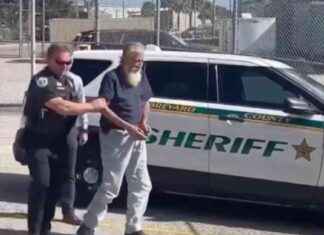Maybe it’s from childhood trauma because their sisters tore them apart. The fact is that the chemist Núria Salán never throws away a book. She says it’s a sin. If you make eyes at the Charms, she buys it even though she already has it. Some are in quadruplicate, like Wurtz’s synthesis. Her husband Francesc, also a metallurgist –the Cartesian of the two– is another “geek of booksâ€. Her domestic conversations are of the type: “Do you know if we have The Corrosion Standard in the attic?” They live with more than eight hundred owls that she collects. At the Escola Superior d’Enginyeria Industrial, Aeroespacial i Audiovisual de Terrassa, of the UPC, the books are distributed between the office of the deputy director of Promotion and Students and that of the professor of the Materials Science and Engineering department, in the building next door. side.
In the first one are the pongos: institutional volumes, prizes it has received, two posters of the women’s Barça and an image of the first x-ray in history. She is a hand with a wedding ring, “the property washer.” The author of it was awarded the Nobel Prize for discovering X-rays in 1895. They forgot to mention her. She was Anna Bertha Ludwig, one of the women that Salán remembered in L’enginy (in) visible, a Fibracat TV program.
In the other office, two metal cabinets hold books that their former owners no longer want because they have retired. They are adopted books. There are also the ones she has translated, like William Callister’s Science and Engineering of Materials, full of Post-Its. The ones she has prefaced. in which she has participated. And the dedicated ones, for example by Michael Ashby: “A dedicated book is a treasure, because for a moment you are the most important person.” In the cabinet on the left, there is also a can of asparagus tips full of mercury, which is heavy; there are notes, transparencies, samples in Ilford photographic paper boxes, others in one from Agfa (easy to stack), folders in one from Reserva Brut Nature, stainless steel test tubes, Verbatim diskettes, paper diaries up to 1998, acetates for projections of the That same year, “with this at the congresses you were the queen of the mamboâ€, magazines, the doctoral thesis of Júlia Simon Arias –the first study of the Catalan forge–, from whom she learned a lot. She assures that she does not get Diogenes syndrome because she knows where everything is.
He likes the sound the pages make when he turns them. Write your name on the front edge so no one takes the books; “Just because you have a lot of them doesn’t mean you don’t want them.” On paper it is easier to memorize than on a screen: you remember where a graph occupies, you associate the whole, including the smell.
In the right-hand cupboard there is a PPE helmet, a Werther’s candy jar with coffee capsules, an ingot tray, a cyclist’s bottle to drink water in class. There he achieves a deathly silence by teaching the sow inseminator. She gets all the attention. Like when she says that the durometer calculates the resistance to penetration, or powder metallurgy is the metallurgy of powders. Or when she explains the subjects starting with gore, blood and liver from an accident. And from there, she goes back to CSI to explain the metallurgical processes that caused the catastrophe, and how they could have been avoided, like Learning from disasters. He shows pieces that have broken, deformations in the plastic, the hole that forms in a copper bar with pores.
He spends the day reading. He even reads the labels of the soaps, his eyes go wide. Nothing is comparable to discovering a new word. The last one: funderelele, the scoop ice cream spoon. She says she is “old chive” because she has read a lot. They gave him Francesca from Barcelona, ​​with whom Laia Perearnau won the Néstor Luján, “they told me that he was someone very like meâ€. In her class they call her The Iron Lady, and in her closets there are also gifts from her students. On a board, she photos of her family to remind herself that she has it; she spends so much time in college that she doesn’t feel alone. She wanted a daughter for each vowel: Anna, Eva, Irene, Olga and Úrsula. She was planted in E. One is a telecommunications engineer, and the other, a nurse. What will become of her adopted books when she retires?








